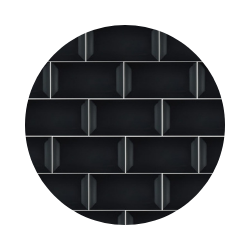
blog, commercial blog, floors, walls
Are you looking for inspiration for your next home renovation project?
Look no further than the world’s most beautiful tilework!
From intricate mosaics to stunning geometric designs, these top tiling projects from around the world will leave you awestruck. Whether you’re a DIY homeowner or an interior designer, these examples are sure to spark your creativity.
Alhambra Palace, Granada, Spain
The Alhambra Palace in Granada, Spain is a stunning example of Moorish architecture and design. The intricate tilework throughout the palace is a testament to the skill and craftsmanship of the artisans who created it. The use of vibrant colors and geometric patterns creates a sense of harmony and balance that is truly breathtaking.
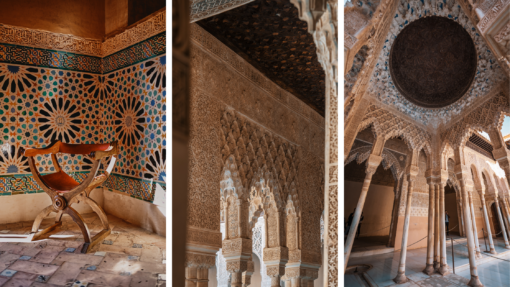
Alhambra Palace, Granada, Spain
Sheikh Zayed Grand Mosque, Abu Dhabi, UAE
The Sheikh Zayed Grand Mosque in Abu Dhabi is a modern masterpiece that combines traditional Islamic design with contemporary elements. The marble and tilework throughout the mosque is simply stunning, with intricate floral and geometric patterns that are both intricate and eye-catching.
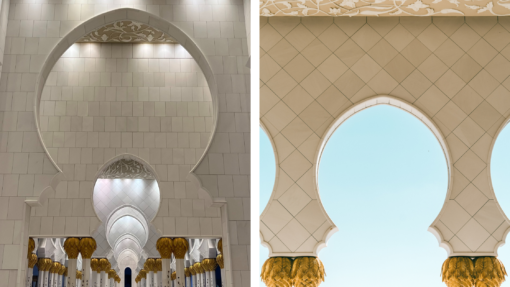
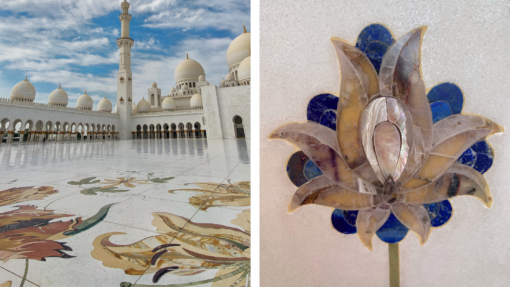
Sheikh Zayed Grand Mosque, Abu Dhabi, UAE
Park Guell, Barcelona, Spain
Park Guell in Barcelona, Spain is a whimsical wonderland of tilework created by the famous artist Antoni Gaudi. The park features an array of colorful mosaics, intricate patterns, and playful sculptures that are sure to delight visitors of all ages.
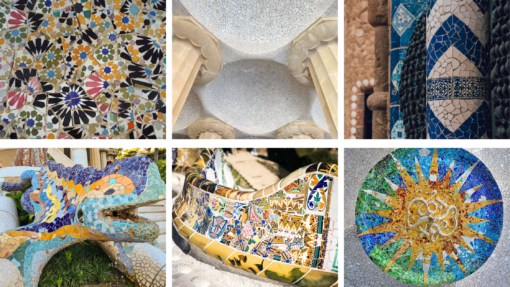
Park Guell, Barcelona, Spain
The Blue Mosque, Istanbul, Turkey
The Blue Mosque in Istanbul, Turkey is a stunning example of Islamic architecture and design. The mosque is famous for its beautiful blue tiles, which cover the walls and ceilings of the interior. The use of light and shadow creates a serene and peaceful atmosphere that is both calming and awe-inspiring.

The Blue Mosque, Istanbul, Turkey
Casa Batllo, Barcelona, Spain
Casa Batllo in Barcelona, Spain is another masterpiece created by Antoni Gaudi. The building is famous for its colorful and whimsical tilework, which covers the entire façade. The use of vibrant colors and playful patterns creates a sense of joy and wonder that is truly unique.

Casa Batllo, Barcelona, Spain
In conclusion, these examples of the world’s most beautiful tilework are sure to inspire DIY homeowners, consumers, and interior designers alike. Whether you’re looking for traditional Islamic design, contemporary twists on classic styles, or playful and whimsical patterns, there is something for everyone in these top tiling projects from around the world.
So why not incorporate some of these stunning designs into your next renovation project and create a space that is truly breathtaking?
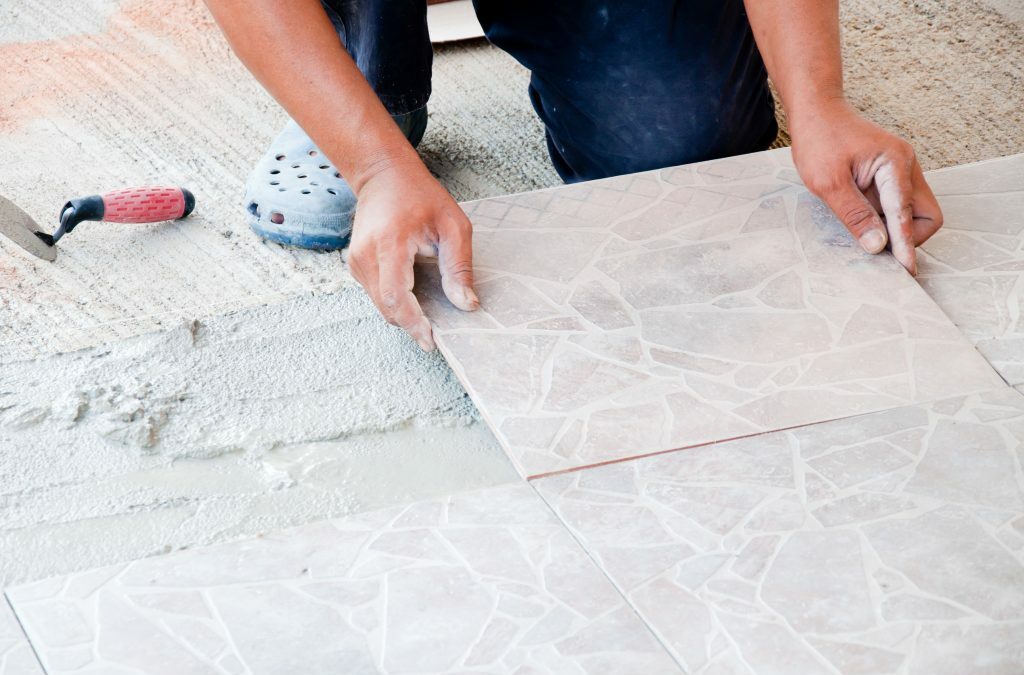
blog, commercial blog, floors, how to articles, walls
A regular question we get in Tiletoria showrooms is how to calculate how much tile you will need for your project. Whether you’re wanting to install your own tiled floor or you want to calculate the materials that you will need to budget for, it is important to know how to work out how much tile you need. The steps are the same regardless of whether you are doing a wall project or a floor.
With a measuring tape and some simple maths, you can estimate how much tile you need and how much the project is going to cost you.
What You’ll need:
- Paper
- A pen/pencil
- Measuring tape
- A calculator

Step 1: Measure the length of one side of the room.
The first step is to measure the floor length and width of the room you want to tile. Measure the length and height of the wall, if it is a wall project.
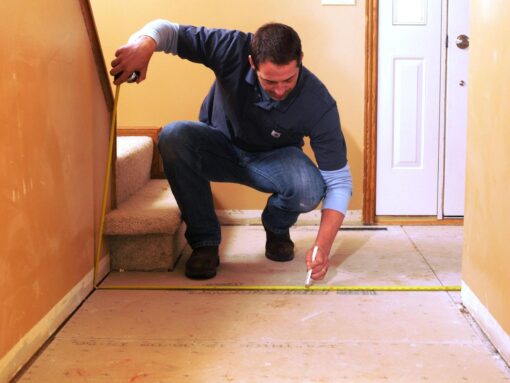
Step 2: Multiply the two measurements.
Once you have both measurements, the next step is to multiply them. Multiplying the length by the width provides you with the square meterage of the project area. For example, if the floor measurements of the room is 15 meters wide by 17 meters long, multiply 15 by 17. The square meter area of this room is 255 square meters in total.
Step 3: Based on this, determine the amount of tiles you’ll need.
Next is to use the above calculations to determine the amount of tiles needed. When buying tiles, they usually come in boxes, and you have to buy the whole box. Divide the total square meters of the room by the total square meters of the tile in the box to determine how many boxes of tiles you will need to buy. Lets say for our example, each box contains 15 square meters of tile. So, if you need 255 square meters, 15 goes into 255, 17 times, (255 ÷ 15) so you’ll need to buy at least 17 boxes.
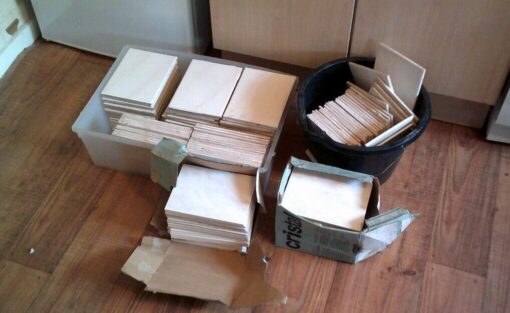
Pro Tip:
This is where the saying “rather be safe than sorry” comes into play. You should never buy just the amount of tile you need because you will always need extra tiles for any cuts, waste, breaks, and mistakes. To be on the safe side, you will need to multiply the square footage of the room by 10%, then add this amount to the total square area of the room. This is the total amount of square meterage of tiles you should buy. To continue with the above examples: 10 x 255 = 25.5, and 255 + 25.5 = 280.5, round up to 281. We’ll need 281 square meters of tile.
Another important reason to buy extra tiles is that often the style or colour of a particular tile gets discontinued after some time, and in the event that you need to replace a broken tile or two, you will need extras on hand to make the repairs. If you don’t, then to fix it, you will have to replace the entire floor.
In other words: Rather spend a little bit more up front to save money in the long run.
Important factors to consider:
Gap Size: Floor or wall tiles are typically installed with gaps between the tiles, which are commonly filled with grout. The average tile may look quite similar to the next tile however, they are often not uniform in shape and size, and would not fit properly if installed without any gaps. These gaps can range from anywhere between one-sixteenth of an inch to half an inch in size. Different sized tiles, materials, and design needs all affect the size of the gaps.
Size: Tile size can range anywhere from smaller mosaics, slab tiles and everything in between. Square sizes are the most popular, accessible, and easiest to install. While straight edge tiles are the most common, there are also unique tile shapes, but the installation of these is not as simple. Large tile sizes can make smaller rooms appear bigger, as well as more open and clean because there are fewer grout lines. However, installing larger tiles may results in more wastage, while installing smaller tiles can add texture to a room.
Material: There are a number of different types of tiles, including ceramic, porcelain, glass, quarry, stone and much more. Ceramic and porcelain tiles are the most popular, cost efficient, and come in a variety of different styles. Glass tiles, are not appropriate for flooring because they crack under pressure, are visually unique and interesting. These are most commonly used for kitchen and bathroom backsplashes. Quarry tiles have rough surfaces that are good for floors that require added grip, such as outdoors and in restaurant kitchens. Stone tiles include marble and granite, which provide unique and natural stone patterns, textures, and colours that are difficult to achieve using ceramics. They also offer the illusion of blending into grout edges, giving off an overall uniform look.
Other frequently asked questions we get regarding how much tile you need:
Question: What if the wall isn’t a simple rectangle and the room isn’t square?
Answer: If the space you want to tile is an unusual shape, draw a picture of the floor plan on a piece of paper, then separate the room into squares or rectangles. Measure each squared-off section separately, convert inches to feet (divide by 12; you’ll probably end up with a decimal), multiply the length and width of each space, then add all these numbers together to find the total square footage.
Question: What if I want to lay the tiles diagonally?
Answer: For tiles laid at a 45 degree angle, the overage or waste factor will be greater, so buy extra.
Question: How many square feet of tile comes in a box?
Answer: Most boxes hold 10 square feet, but check your box to make sure.
Question: Does the size or shape of the tile matter in my calculation?
Answer: No, only the square footage matters.
If you are still uncertain about the calculations, then pop by one of Tiletoria’s showrooms and chat to their sales team for advice.
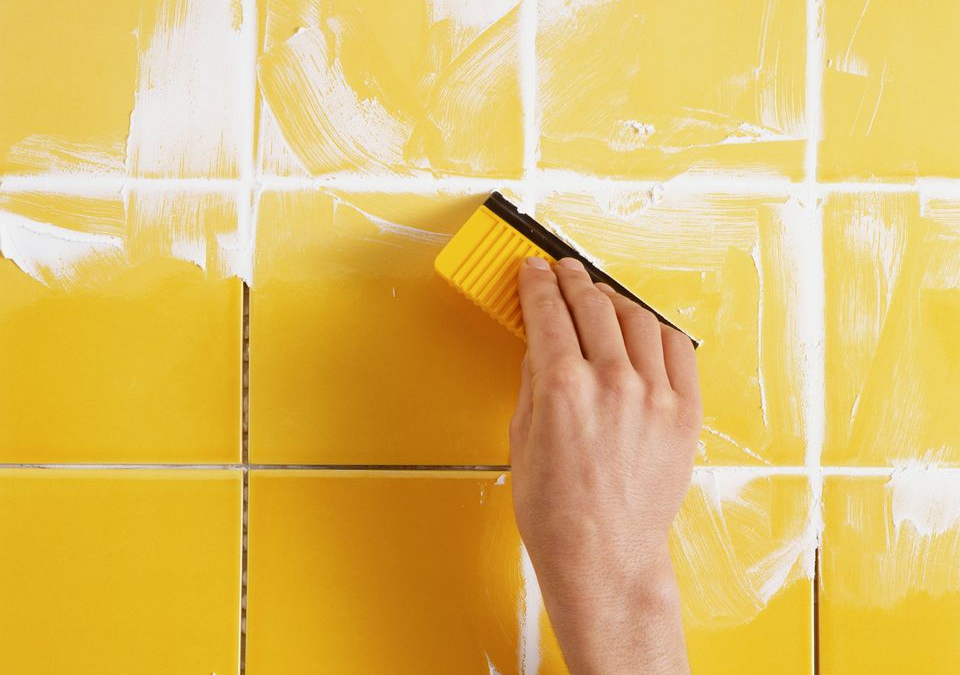
blog, commercial blog, floors, how to articles, walls
The tile grout colour you choose to use on your wall or floor plays an important part in the overall room design. You can choose between colours which are complementing or contrasting with your tiles. Alternatively, if you really want to create a unique space, you can go with a bold option and use non-standard grout colours.
Tile grouts come in a variety of colours from light to dark. Standard grout colours include; pure white, white, grey, black or beige, in a variety of different shades.

Contrasting Grout Colour
This grout is either darker or lighter than the corresponding tile. This will in effect frame each tile. The grout lines will become a feature of the overall tile design. Using small tiles with a darker grout can sometimes appear busy if used over a large area.
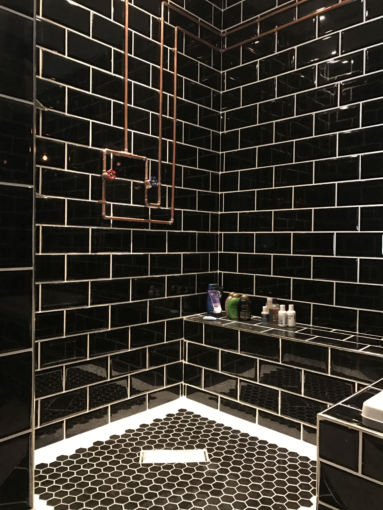

Complementary Grout Colour
This grout will be similar in colour to the tile. This will cause the tiles and grout lines to blend together. Effectively, blurring grout lines so that you see a consistency with the same colour throughout the room. This can be useful over small areas to keep the space less busy.
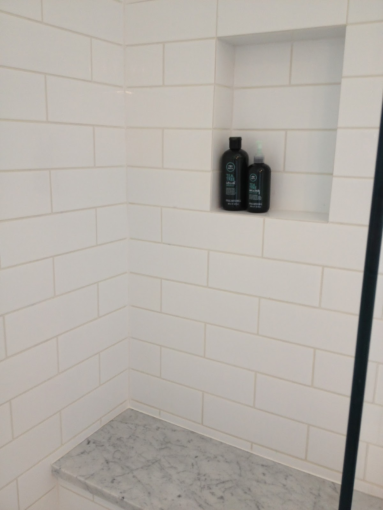
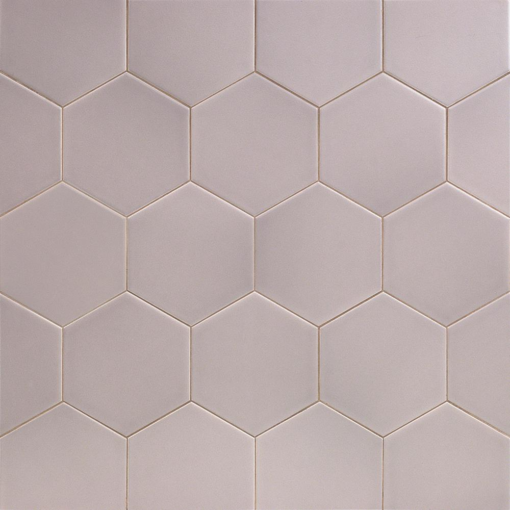
Colourful Grout
We commonly see tiles with white, gray, or black grout, but choosing colourful grout is a great way to make your tiles stand out. Tiles with coloured grout draws attention to the tile layout pattern, and creates a unique looking space, as opposed to a more seamless design.

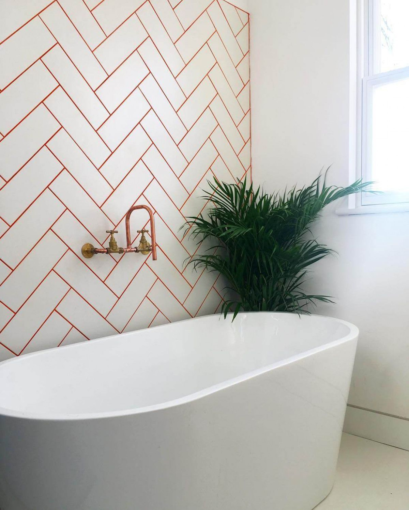
Pro Tip:
Avoid using pure white grout. Over time, using a pure white grout will start to show discolouration and mould quicker than darker shades of grout, especially in areas with high moisture and water. We recommend using an off white or grey grout as an alternative to avoid this from happening and for easier maintenance. We also recommend using a tile grout protector if you are using a light grout colour. It takes a bit more work afterwards protecting the grout, but the results are worth it. It is recommended to re-apply a grout protector every 2 years to prevent discolouration.
Should you need further help or assistance, pop into a Tiletoria showroom near you.
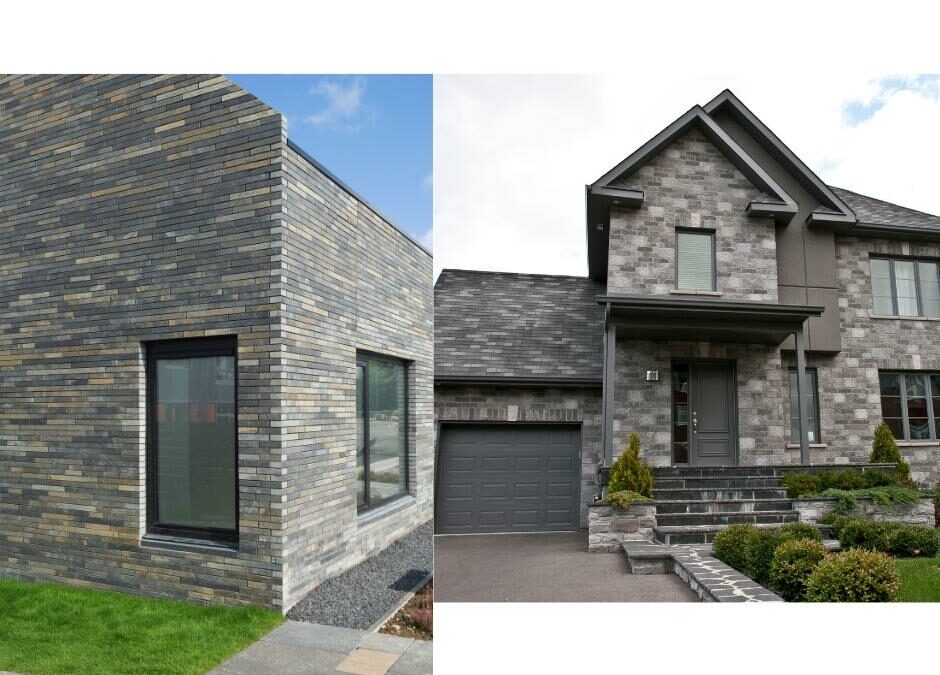
blog, commercial blog, outdoor
From a smart, understated finish to a bold, head-turning design, cladding can be used creatively to take your home or commercial property’s exterior to the next level. Stone cladding is a thin layer of stone that is used for the interior or exterior of a building, generally on top of a material that isn’t stone, such as concrete.
Whether you’re cladding the front of a house, an exterior wall, garden wall, summer house, or a commercial property, let’s look at some of the benefits of cladding products.

THE NATURAL BEAUTY OF STONE
The natural, unrivalled beauty of cladding is an obvious pro! Due to its completely natural textures, shadings and colour variations, natural stone cladding appears to have the same depth as an authentic stone wall. In fact, it can be almost impossible to differentiate between the premium stone cladding and a stone wall that has been built by laying individual stones on top of each other.

HIGHLY VERSATILE
If you are looking to install natural stone wall cladding outdoors, you can use them to enhance braai areas, water features, retaining walls, chimneys, and other exterior substrates like a feature wall for the patio. If you want to give your home’s interior a natural stone touch, stone cladding is an excellent choice for fireplaces, feature walls and bathrooms. Additionally, it is also complimentary to other materials such as concrete and timber.
VERY DURABLE
Another benefit is its extreme durability and long lifespan. If you decide to use it on an exterior wall, stone cladding is robust and can withstand the effects from all forms of nature. Come rain or wind, your stone cladding is there to stay. It’s even fire resistant, which is a great added benefit.
There are many types of natural stone that are usually applied on the exterior. Some types of natural stone are suitable for an area that are damp or wet most of the time. Some other types like basalt absorb humidity easily, which will likely to trigger moss growth. Make sure to choose proper natural stone and apply it where it is meant to be.
COULD POTENTIALLY INCREASE THE VALUE OF YOUR HOME
Lastly, it may increase the value of your home. Natural stone isn’t the cheapest of cladding, but it’s an investment that could pay off further down the line. By choosing natural stone, it may assist you in realising your resale expectations of your property if you decide to sell. Because of its environmental factors and durability, it’s a benefit for potential buyers to invest in.

Need help? Tiletoria’s sales team can assist you in selecting the perfect stone cladding to match your dream space! Visit a Tiletoria showroom near you to view our range of natural stone cladding or check out our website for more!

blog, commercial blog, floors, walls
Choosing the size of the tiles for residential space is a critical design decision since it affects how large the room is perceived to be as well as setting the mood of the place… cozy, cool, spacious, and busy? If your customer has a small space or a large space, what are the best sizes to choose from? Should you advise smaller tiles to marry with the size of a tiny space? Will large tiles automatically make things look larger? It’s not entirely cut and dried but it depends upon your circumstances and the room itself.
While it will certainly help in deciding by offering samples, sometimes it’s difficult for a customer to picture exactly what those tiles will look like in the home. The amount of natural light, the location of their fixtures and fittings, ceiling heights, and available wall space- all play a role in how the finished space will look. It’s generally good advice to purchase tiles of a size relative to the amount of space. So, a really large area, say an open plan kitchen or dining room, can probably handle really large format tiles or planks which will lengthen the room in the direction of the planks (like the image above). If it’s a medium size bathroom, a medium-sized tile will generally be suitable. The tiniest of guest bathrooms may look best with smaller, even mosaic-style tiles.

Right: adagio light grey porcelain
However, one thing to bear in mind is grout lines, as these will make an impact on the final result and whether the space will look smaller or larger. The more grout lines you have, the busier your wall or floor will look and this may tend to make a smaller space look even more restricted. It may be good to go with a medium-sized tile instead to reduce that grid-like appearance that results from grout lines and give the illusion of a larger space.
On the other hand, a smaller bathroom, for instance, might have some difficult angles which means, practically speaking, a larger tile is going to need more cuts to fit around those items. If the toilet is located quite close to the shower, for instance, those tiles running along both may require more work than using a smaller tile that will fit better around them.
One thing that will make a room look larger is to use a grout color that is similar to the color of the tiles. This will then make that grid appear less noticeable and the tiles will look more seamless.
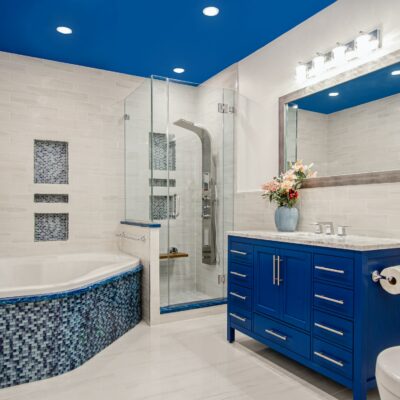 One area you can usually get away with smaller tiles is inside a shower cubicle. More grout lines mean better traction and less slipping, so choosing a small or mosaic tile for this area with a larger tile in the rest of the space is a good idea.
One area you can usually get away with smaller tiles is inside a shower cubicle. More grout lines mean better traction and less slipping, so choosing a small or mosaic tile for this area with a larger tile in the rest of the space is a good idea.
Left: brick glass mosaic
Whatever your project requires, our knowledgeable Tiletoria sales team are eager to assist you. Please contact your closest showroom to find the perfect size tiles for your renovation.

commercial blog
In parts 1 and 2 of ‘How to Read a Tile Specification’, we examined the dimensional tests, water absorption and structural tests. In the third and final part, we’ll look at slip resistance – a crucial factor for installing tiles in outdoor areas, commercial kitchens, bathrooms and commercial spaces where slipping can be a hazard and a legal issue.
Slip Resistance
Item 15 tests for Slip resistance. Floor slip resistance testing is the science of measuring the Coefficient of Friction (CoF) of flooring surfaces, either in a laboratory or on floors on site. Flooring is tested using a tribometer (a floor slip resistance tester) to determine if there is a likelihood for slip and fall accidents, either dry or most often when wet with water or lubricated with other slippery substances.
A Static Coefficient of Friction (SCoF) is unreliable. Often used in the US for assessing safety, SCoF measurements are often misleading where flooring gets wet or otherwise lubricated in use. The Ceramic Tile Institute of America and the Tile Council of North America have ruled the method to be inadequate for assessing slip safety. The slipperiness of flooring materials can change significantly due to the installation process. For instance, grouting; cleaning or polishing; inappropriate maintenance or longer-term wear also change the slip resistance of flooring. Data quoted simply as CoF should be viewed with uncertainty. DCoF means Dry Coefficient of Friction.
Three Viable Methods:
The Pendulum Tester
This is a national standard for pedestrian slip resistance in 49 nations. It is the most widely used pedestrian slip resistance test method worldwide. The pendulum uses a standardised piece of rubber, which is set up to travel across the flooring sample mounted onto a pendulum device.

A Digital Tribometer
This is used as the test instrument for America’s ANSI B101.3 test standard, which measures dynamic friction at a lower speed than the pendulum. This particular tribometer, a BOT-3000, is also a drag-sled meter, which means that it crawls along the floor under its own power at a constant speed measuring the resistance to slip of a standardized piece of rubber loaded into the bottom of the machine.

The Variable-Angle Ramp
This is a German-developed method for obtaining pedestrian slip resistance values. Flooring samples are mounted horizontally on the ramp tester and an operator clad in safety boots or bare feet performs a standardised walk up and down the sample while wearing a harness to stop the operator from being injured. The sample is slowly inclined until the operator slips on the surface. The angle at which the subject slips is then recorded. Two operators repeat this test three times and then an average is calculated. The repeatability of this test method is reliable.

Co-efficient of slip resistance: dry vs. wet surfaces
Dry slip resistance is not an indicator of wet slip resistance, in fact, the two often vary inversely. Therefore, reliable wet slip resistance testing is often needed as well as reliable dry testing. Slip resistance is tested both with footwear and barefoot. This is especially important when testing areas which are normally sloped and/or wet such as swimming pool surrounds or exterior access ramps. In the tile industry, an ‘R’ rating is used to indicate slip resistance. This rating correlates with an angle of inclination; the steeper the angle, the higher the slip resistance and the higher the R rating. US standards require a minimum Dry CoF of 0.42.
R rating for dry surfaces Recommended for

Slip resistance groups:
Barefoot on wet surface. Recommended for

If you have any technical questions relating to tiles, you are most welcome to contact our Tiletoria Showroom’s to speak to our experts. Our experts offer technical training that is available online or in office with your architectural team. We are also SAIAT accredited to issue CPD credits.








